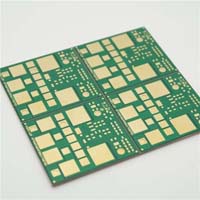Printed Circuit Boards
Double sided FPC circuit board polyimide flex pcb
- custom flexible pcb
- flexible pcb jlcpcb
- flex circuit materials
- kapton flex circuit
- Product description: flex pcb china flexible circuit manufacturers rigid flex pcb cost rigid flex printed circuit boards polyimide flex pcb custom flexible pcb flexible pcb jlcpcb flex circuit materials kapton fle
Double sided FPC circuit board polyimide flex pcb
Product Name: Double sided FPC board
Product Introduction
Application field: Multi layer FPC flexible board
Material: FPC
Number of layers: 2
Plate thickness: 0.13mm
Minimum aperture: 0.2
Minimum line width/line spacing: 0.1mm
Copper thickness: 1OZ
Solder resistance: yellow film with white letters
Surface technology: ENIGAdvantages of Flexible printed circuit boards
The production of flexible printed circuit boards is a technology that is in demand in the manufacture of a wide variety of products. Flexible boards are found in electronic panels and onboard equipment, medical diagnostic equipment, smartphones, and even space satellites.
Manufacturers of electrical appliances and equipment choose flexible printed circuit boards for the following properties:
Slim Base: Reduced the size of electronic devices, and due to its flexibility, the PCB can be folded and reduced in size if necessary.
Reduced weight: With a flexible base, these PCBs are 70-80% lighter than their rigid base counterparts.
Improved heat transfer: this is facilitated by a thin, flat base that distributes heat evenly across the surface of the board.
The production of flexible printed circuit boards using innovative technology is gradually replacing the wire harnesses, connectors, and cables traditionally used in the instrument manufacturing process.
Flexible PCB Board Provides Several Advantages
High installation speed: no cables to be twisted into bundles – it is enough to install boards with flexible conductors. Errors are excluded, as in the case of wiring.
Reliable connections: Single-boarded conductors are more stable and easier to control impedance, crosstalk, and noise.
Ergonomic Mounting: Compared to heavier cables, the flexible printed circuit boards reduce the mounting area and product weight by 75%.
Reduced operating costs: Flexible circuit boards are resistant to shock and vibration and require fewer repairs.
Functionality: The flex board may have rigid sections required for mounting some equipment components.
Bending strength is the main reason for the reliability of a flexible printed circuit board. Components of this type, under the most adverse conditions, last much longer than the old rigid boards with round cables.
Flexible PCB Instant Quote Online
You can learn more about the technological possibilities of printed circuit board production, additional requirements, and cost by sending us an instant quote for flex PCB.
Production of Flexible PCB Maintaining Highest Standards
All produced boards undergo mandatory quality control of metallization in the hole and are also checked for good solderability and flatness.
The cost of production of prototypes of printed circuit boards
The price of printed circuit boards produced to order depends on the following criteria:
Materials used;
Size and design;
Foil thickness;
Number of holes;
Accuracy class and difficulty level.
Faster Turnaround
The presence of high-tech production facilities allows the ONESEINE flex to manufacture printed circuit boards of any complexity in the shortest possible time.
Technical equipment, knowledge of all the subtleties of the process, and the use of exclusively high-quality materials allow us to provide a full range of services, from project development to fully functional electronic assembly.
FAQS
What is flex in PCB?
A flexible circuit board is made of flexible materials such as polyimide, polyester, or other similar materials. These boards come with bending and flex features to fit into specific shapes and provide a more efficient use of space.
Where are flex PCBs used?
The top three applications of flex PCB are: medical devices, consumer electronics, automotive components, and more
What is a flex PCB made of?
Flexible PCB is made of polyimide, polyester, polyethylene naphthalate (PEN), polyetherimide (PEI), and polyethylene terephthalate (PET).
Why use Flex PCB?
Flexible PCBs are ideal for several applications which require flexibility in frequent movements. Similarly, flex PCBs can provide excellent performance in equipment where high-density interconnections are required.
Flex vs Rigid PCB
The basic difference between flex and rigid PCB is the choice of materials and their bending capacity. Flex PCB has flexible characters whereas rigid boards are tight and they are used where design requirements are harder and strong.
What is flexible pcb price?
The price of flexible PCB depends on design, material, and minimum order quantity. If you want to get an instant quote for flexible PCB, you can contact our sales department.
Categories
Latest News
Contact Us
Contact: Ms Tracy
Phone:
Tel:
Add: BludingA,Shixiaganglian Industrial Park,Shajing,Baoan,Shenzhen,China




 Tracy
Tracy